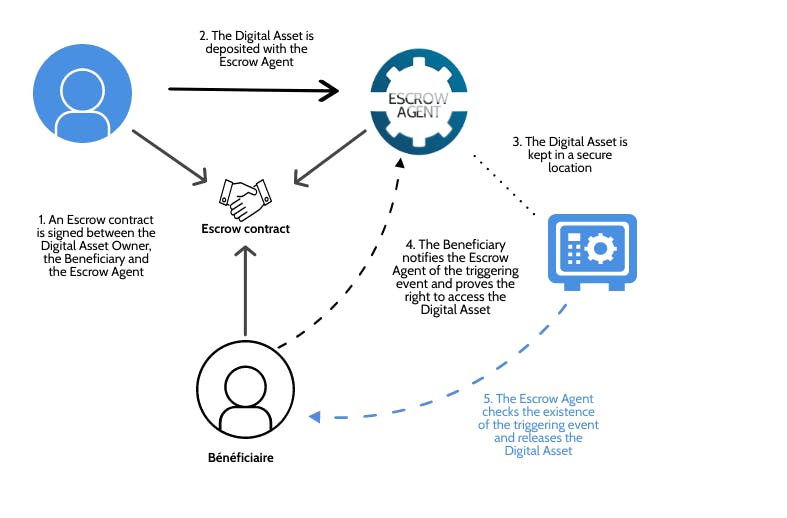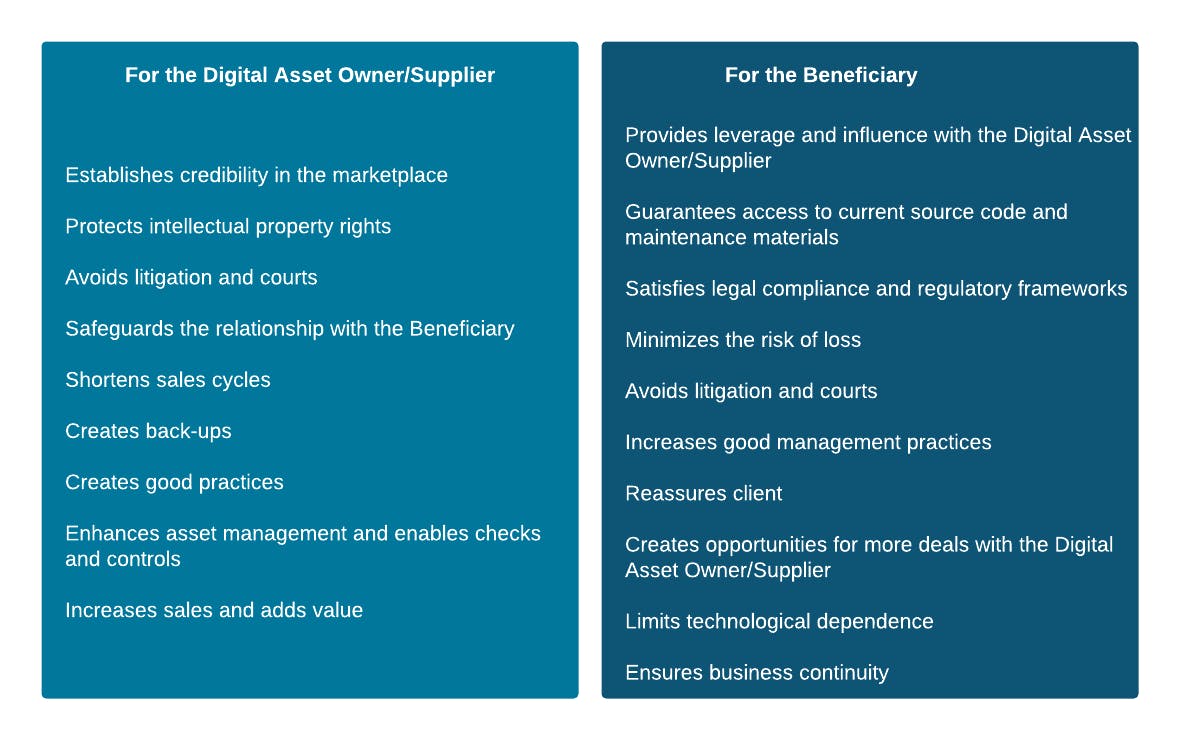Escrow Agreement: best practice to ensure business continuity

Types of software Escrow Agreements
The main difference between the two forms of Escrow agreements is the number of entities involved.
The basic escrow contract takes the form of an escrow clause signed between the Beneficiary and the Digital Asset Owner. This escrow clause can be a standalone contract or part of a broader agreement entered into between the Beneficiary and the Digital Asset Owner. Vaultinum, is a trusted software escrow service provider and can assist Digital Asset Owners in drafting an escrow clause. The Escrow Agent is not a party to the agreement containing the software escrow clause. However, the Software escrow service provider is mentioned in the clause as the trusted entity with which a copy of the Digital Asset Owner will be placed for safe-keeping.

The tripartite escrow contract is the most common form of Escrow. It is a specific agreement entered into between the Digital Asset Owner, the Beneficiary and the software escrow service provider. This agreement sets out the obligations and rights of all three parties, such as the deposit modalities (nature and content of deposited elements, frequency of updates, verification of the deposited elements, etc.), the Escrowed Digital Asset’s access triggering events, the Digital Asset’s access procedure, the rights granted to the Beneficiary once access has been granted, the duration and termination conditions of the Tripartite Escrow Contract, and the apportionment of the escrow costs between the parties. A model tripartite escrow contract can be made available by Vaultinum upon request.

Why enter into a software Escrow Agreement?
Risk is at the heart of the Escrow system and risk mitigation its essence. Dependencies create risk. Risk needs to be identified, documented and mitigated. Both the Digital Asset Owner and the user or licensee of the Digital Asset need to recognize the importance of protecting the Digital Asset.
Using software escrow services, demonstrates that the risk has been identified, documented and is being dealt with.
This is because of the following:
✓ It recognizes and deals with dependency risks,
✓ It is part of a business continuity plan for any organization,
✓ It rebalances the respective powers of the Digital Asset Owner and user/licensee,
✓ It offers some guarantee to the Beneficiary,
✓ It anticipates future risk and mitigates it,
✓ It allows the Beneficiary to transition out of a relationship/dependency.
Regardless of the configuration of the Digital Asset, either installed on the Beneficiary’s premises or accessible through the internet as a software-as-a-Service (SaaS) application, entering into an Escrow agreement offers a degree of protection for both parties.

What about the Software Escrow provider ?
To mitigate risk, the Digital Asset Owner places its Digital Asset in trust with a secure, independent, trustworthy third party: the software escrow agent.
The Digital Asset Owner does not want the Beneficiary to access the Digital Asset before or unless certain conditions are met. The Beneficiary wants to make sure that if they meet pre-agreed conditions, they will have access to the Digital Asset.
Using an independent, neutral, trusted third party, the software escrow Agent, to hold the Digital Asset until or if the conditions are met, creates a circle of trust between the different parties. For reference, Vaultinum has been providing software escrow services for over 40 years
Disclaimer
The opinions, presentations, figures and estimates set forth on the website, including in this blog, are for informational purposes only and should not be construed as legal advice. For legal advice you should contact a legal professional in your jurisdiction.
The use of any content on this website, including in this blog, for any commercial purposes, including resale, is prohibited, unless permission is first obtained from Vaultinum. Request for permission should state the purpose and the extent of the reproduction. For non-commercial purposes, all material in this publication may be freely quoted or reprinted, but acknowledgement is required, together with a link to this website.

Recommended for you


